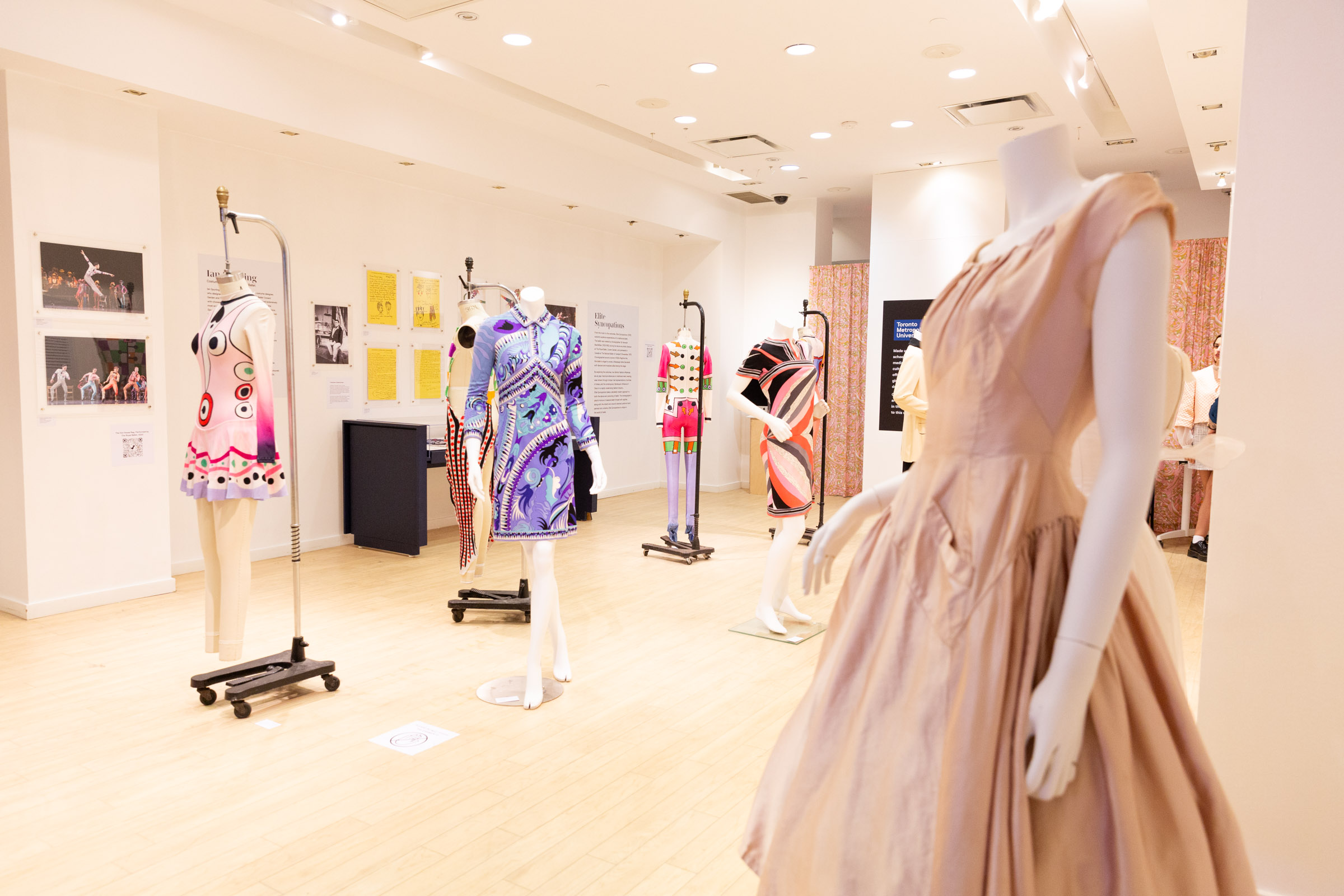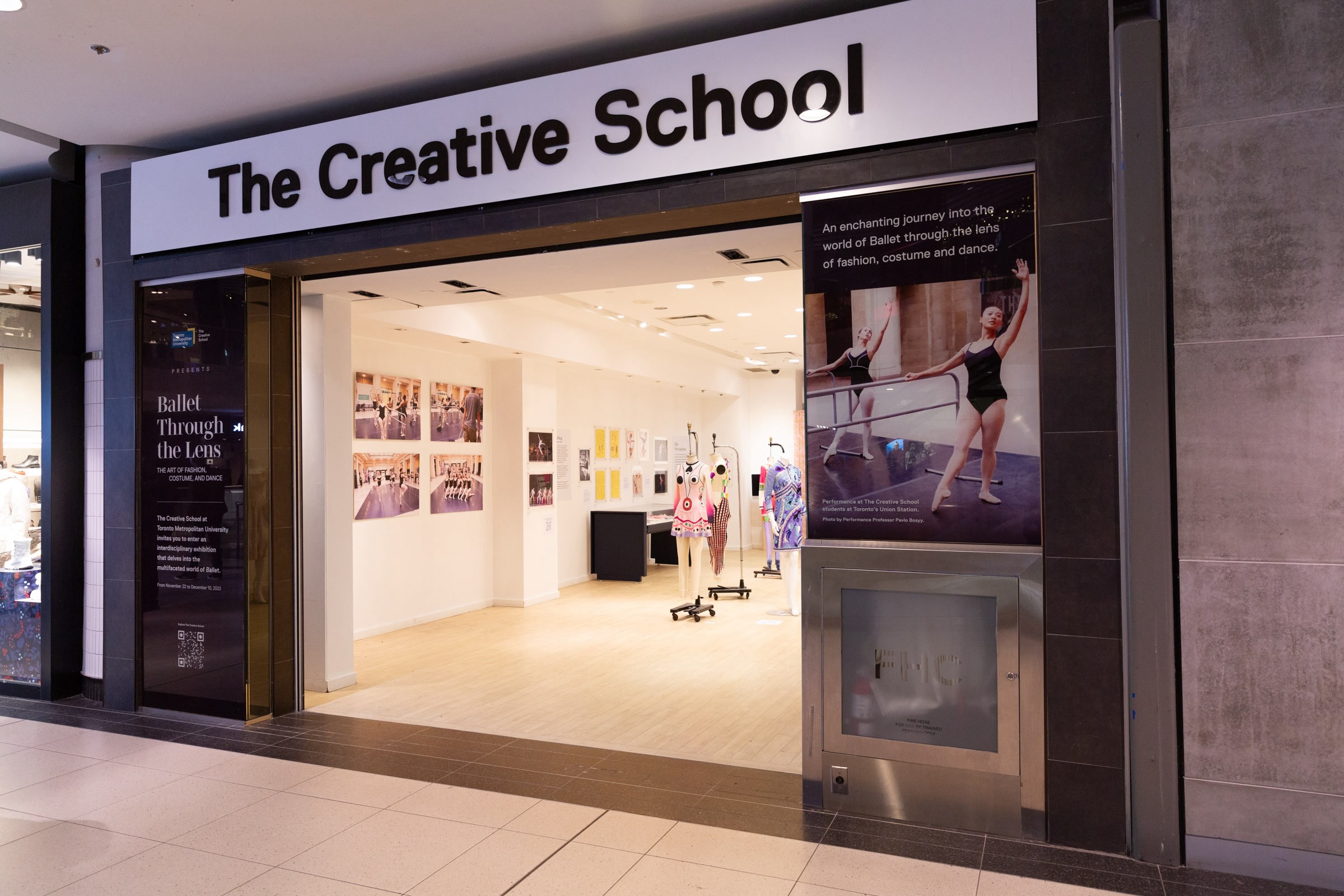Ballet Through the Lens
Ballet Through the Lens: The Art of Fashion, Costume and Dance was co-curated by MA Fashion Students Patrick Taylor and Sofia Beraldo, was an exhibition that beautifully unveiled the inspirations behind Ballet through the lenses of fashion, costume and dance.
Displayed at the Eaton Center from November 22, 2023 to December 2, 2023.
All photographs taken by Liam Mackenzie.
Elite Syncopations
From the music to the costumes, Elite Syncopations (1974) subverts audience expectations of a traditional ballet. The ballet was created by choreographer Sir Kenneth MacMillian (1929-1992) during his tenure as artistic director at the Royal Ballet in London, and first premiered in Canada by the National Ballet of Canada in 1978. Choreographed around a score of 1920s Ragtime hits, the ballet is loosely staged to evoke a Mississippi delta Dancehall with dancers and musicians alike sharing the stage.
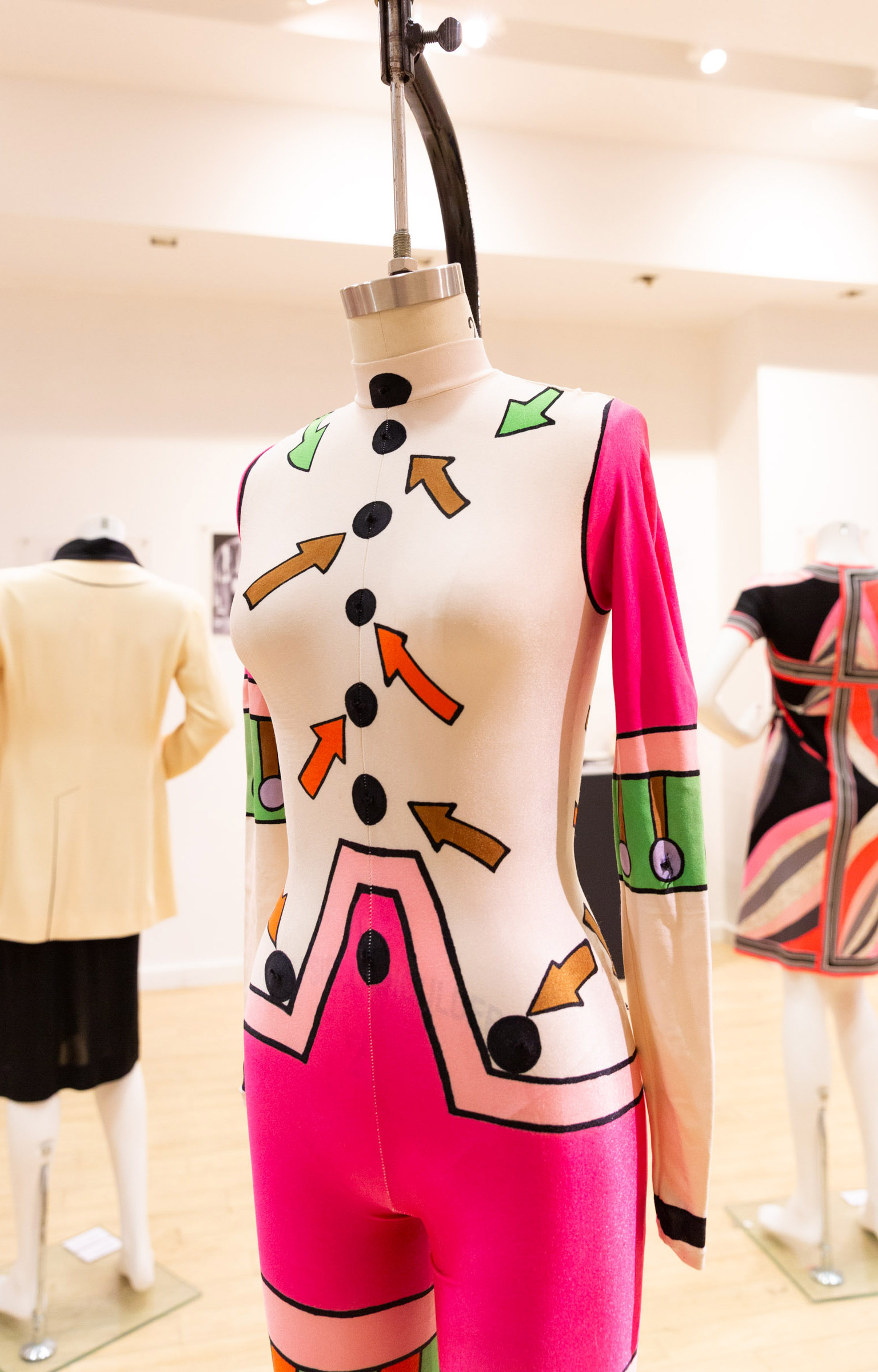
"Solo Girl" 2014.08.044
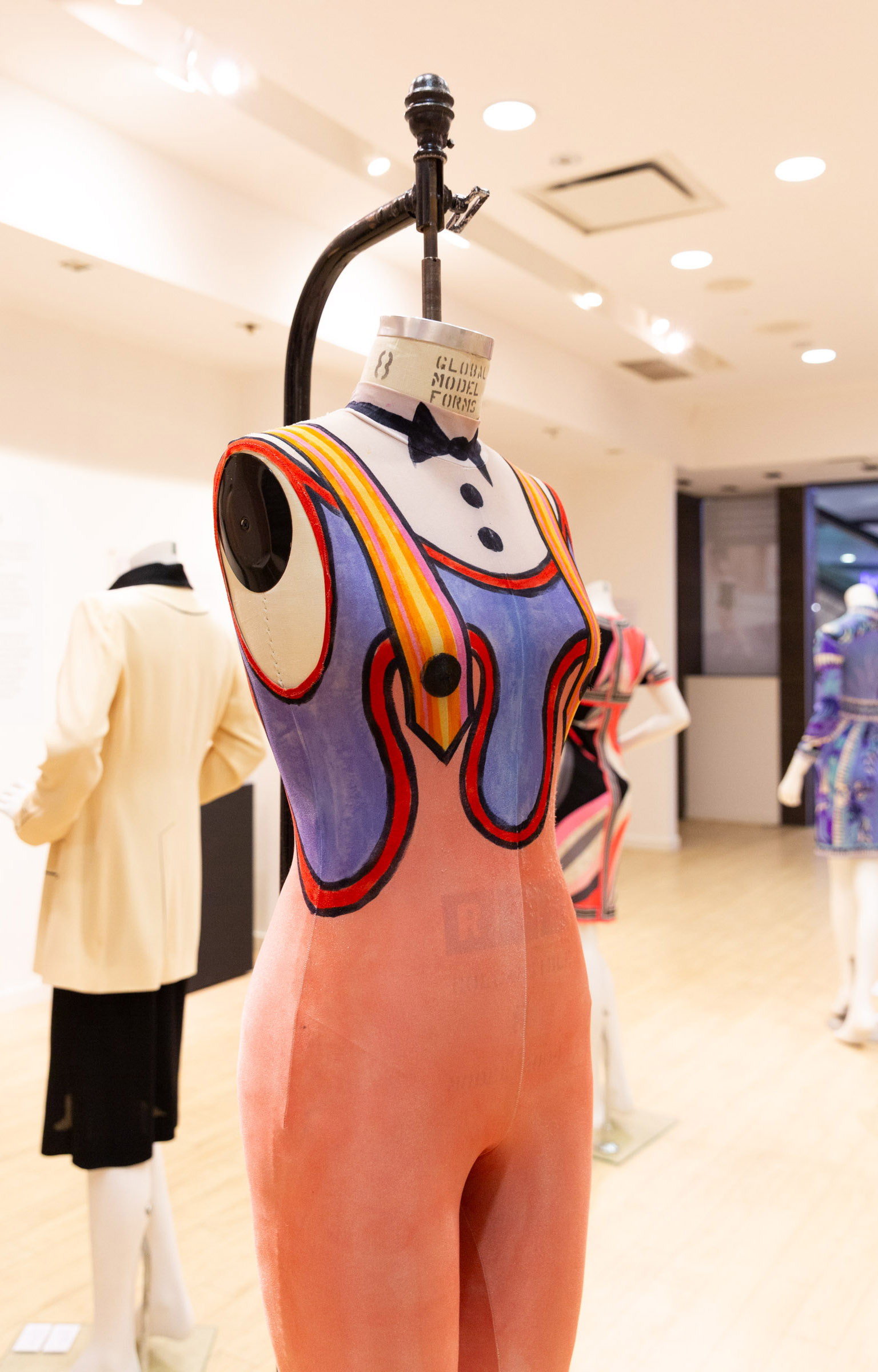
"Dancer 9" 2014.08.048
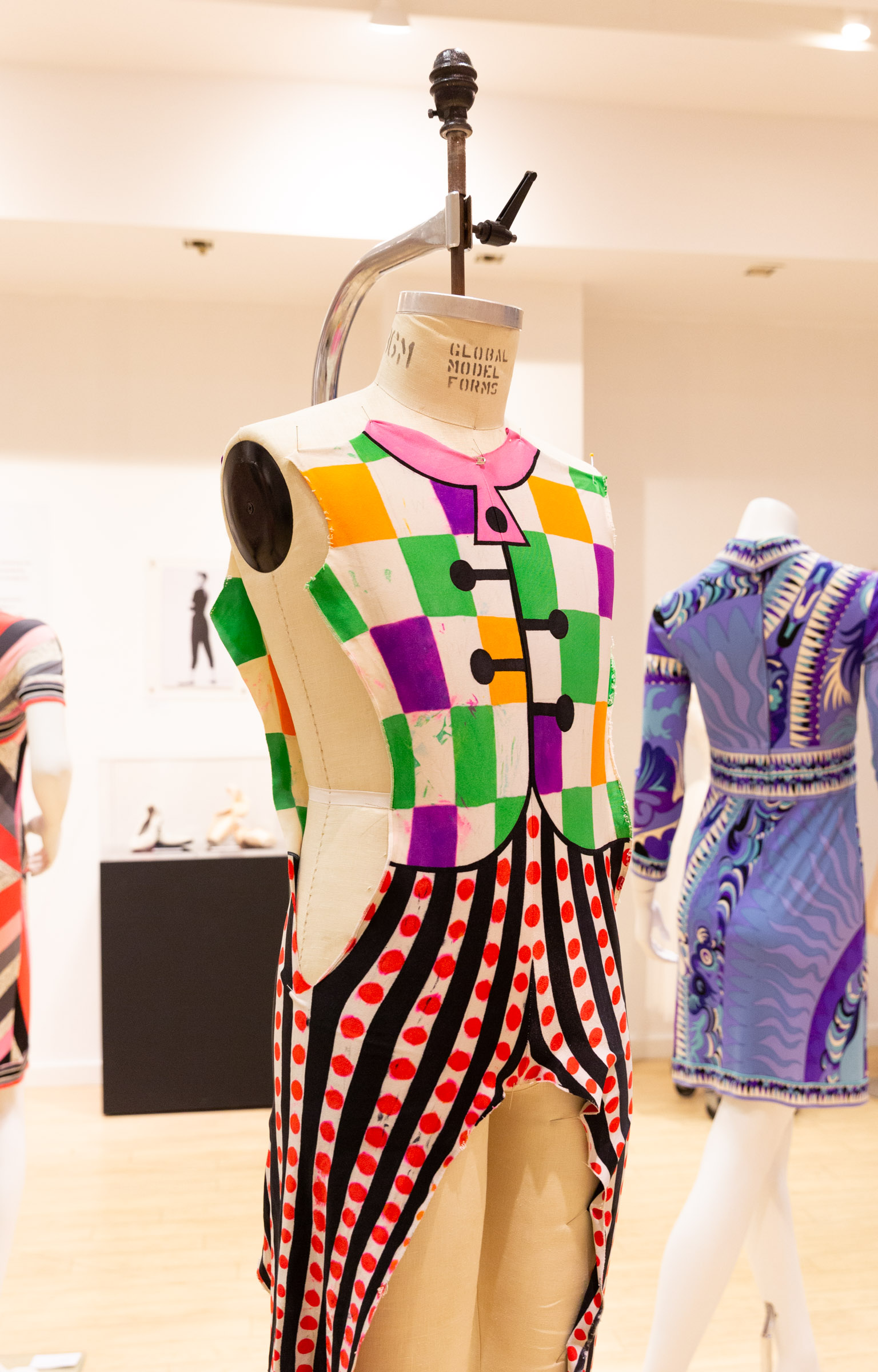
"Incomplete" 2014.08.053
By exploring the costumes, two distinct fashion influences are at play: historical references to traditional mens evening wear shown through trompe l’oeil representations of articles of dress; and the contemporary flamboyant influence of Disco and the rapidly modernizing fashion industry. Elite Syncopations takes a decidedly modern approach to both the dance and costuming of ballet, with its playful mixture of classical ballet infused with ragtime steps, and the colourful abstract patterns and prints boldly hand painted onto unitards, it is unique in the world of ballet.
Fashion & Ballet
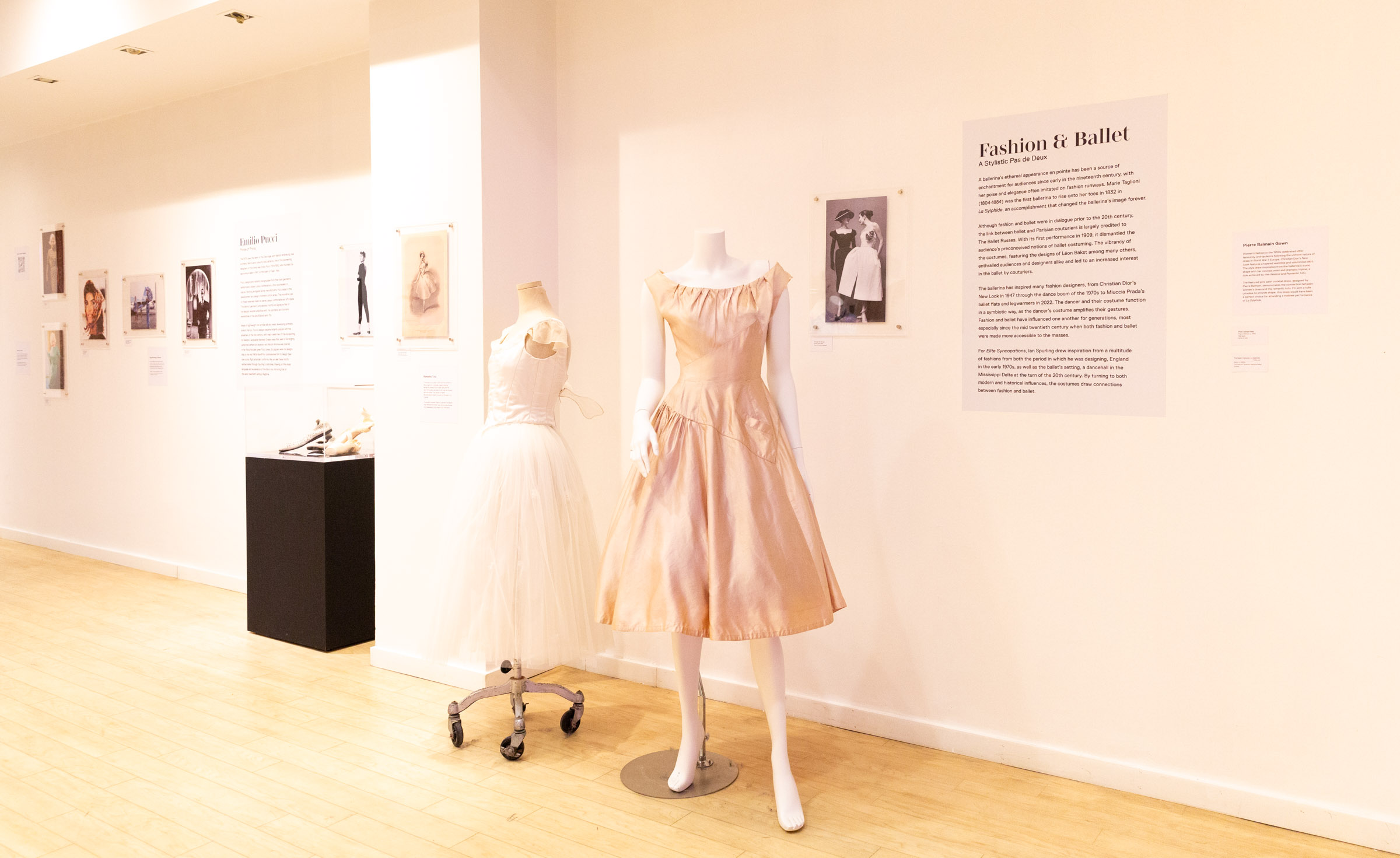
Pink Balmain dress (2014.07.043)
A ballerina’s ethereal appearance en pointe has been the envy of audiences for centuries, with her poise and elegance continually being imitated on runways and streets. Marie Taglioni (1804-1884) was the first ballerina to rise onto her toes in 1832 in La Sylphide, an accomplishment that changed the ballerina’s image forever.
Although fashion and ballet were in dialogue prior to the 20th century, the link between ballet and Parisian couturiers is largely credited to The Ballet Russes. With its first performance in 1909, it dismantled the audience’s preconceived notions of ballet costuming. The vibrancy of the costumes, featuring the designs of Léon Bakst among many others, enthralled audiences and designers alike. This mutual amazement and demand from audience members led to an increased interest in the ballet by couturiers.
The ballerina has inspired many fashion designers from Christian Dior’s New Look in 1947 to Miuccia Prada’s ballet flats and legwarmers in 2022. The dancer and their costume function in a symbiotic way, as the dancer’s costume amplifies their gestures. Fashion and ballet have influenced one another for generations, most especially since the mid twentieth century when both fashion and ballet were made more accessible to the masses.
For Elite Syncopations, Ian Spurling drew inspiration from a multitude of fashions from both the period in which he was designing, England in the early 1970s, as well as the ballet’s setting, a dancehall in the Mississippi Delta at the turn of the 20th century. By turning to both modern and historical influences, the costumes exemplify the link between fashion and ballet.
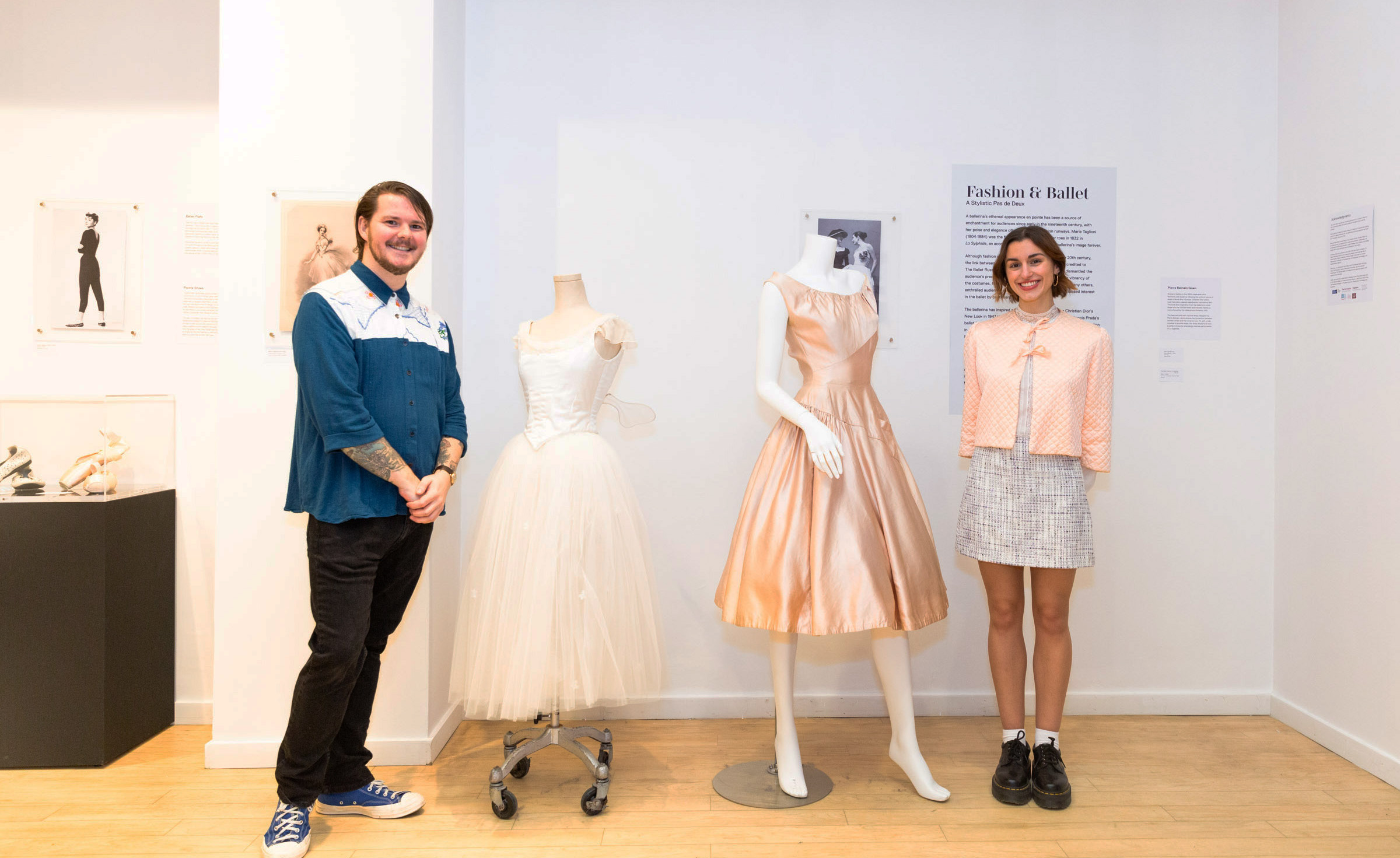
MA Alumni Co-curators Patrick Taylor (left) and Sofia Beraldo (right).
Emilio Pucci
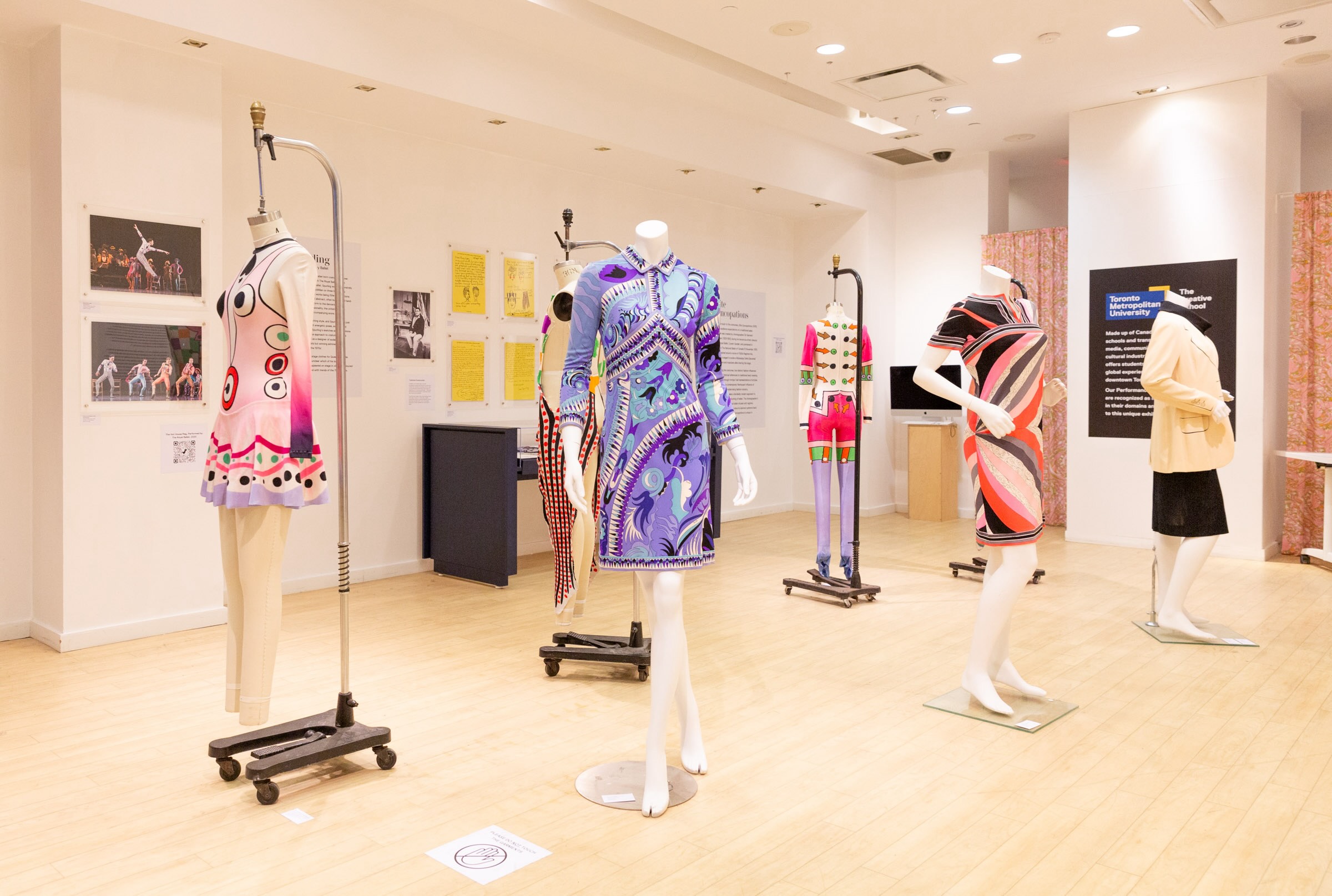
Pink dress (2014.08.040), Blue Emillio Pucci Dress (2014.07.430), Pink Emilio Pucci Dress (2014.07.431), Moschino Jacket (2009.01.212).
The 1970s saw the dawn of the Disco age, with fashion embracing new synthetic fabrics and colourful bold patterns. One of the pioneering designers of this trend was Emilio Pucci (1914-1992) who founded his eponymous label in 1947 on the island of Capri, Italy.
Pucci designs are instantly recognizable from their bold geometric patterns and vibrant colour combinations, often psychedelic in nature. Working alongside textile manufacturers, Pucci aided in the development and design of stretch cotton jersey. The innovative use of these materials made his pieces casual, comfortable and affordable. The distinct geometric and abstract motifs and signature flair of his designs became ubiquitous with the optimistic and futuristic sensibilities of the late 60s and early 70s.
Made of lightweight non-wrinkle silk and newly developing synthetic stretch fabrics, Pucci’s designs became instantly popular with the jetsetters of the mid-century, with major celebrities of the era sporting his designs. Jacqueline Kennedy Onassis was often seen in his brightly patterned caftans on vacation, and Marylin Monroe was interned in her favourite green Pucci dress. So popular were his designs that in the mid 1960s Braniff Air commissioned him to design their now iconic mid-century flight attendant uniforms. We can see these motifs reinterpreted through Spurling’s costumes, drawing on the visual language and exuberance of the disco era, mirroring that of the early twentieth century Ragtime.
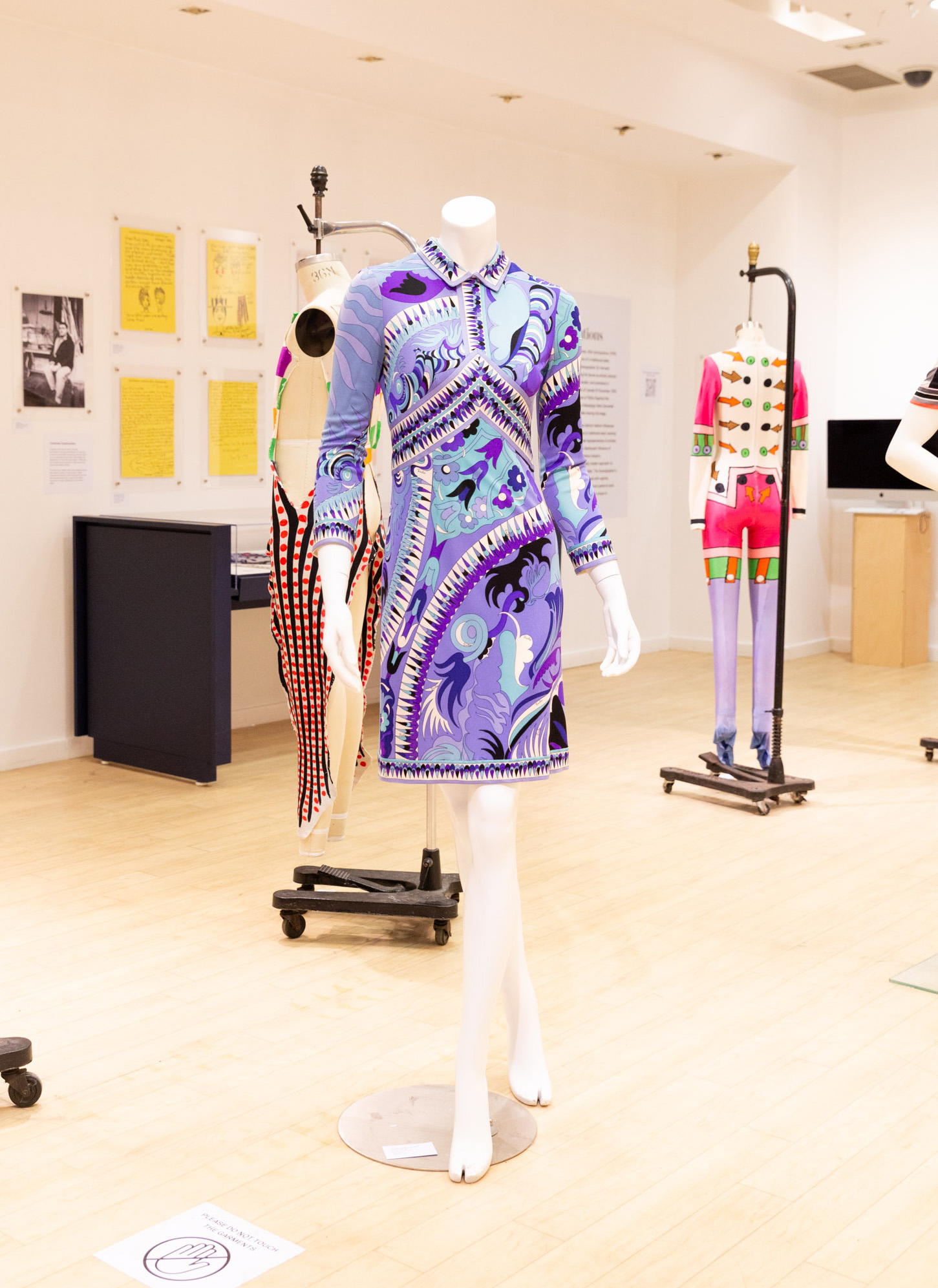
Emilio Pucci Dress (2014.07.430)
Ian Spurling
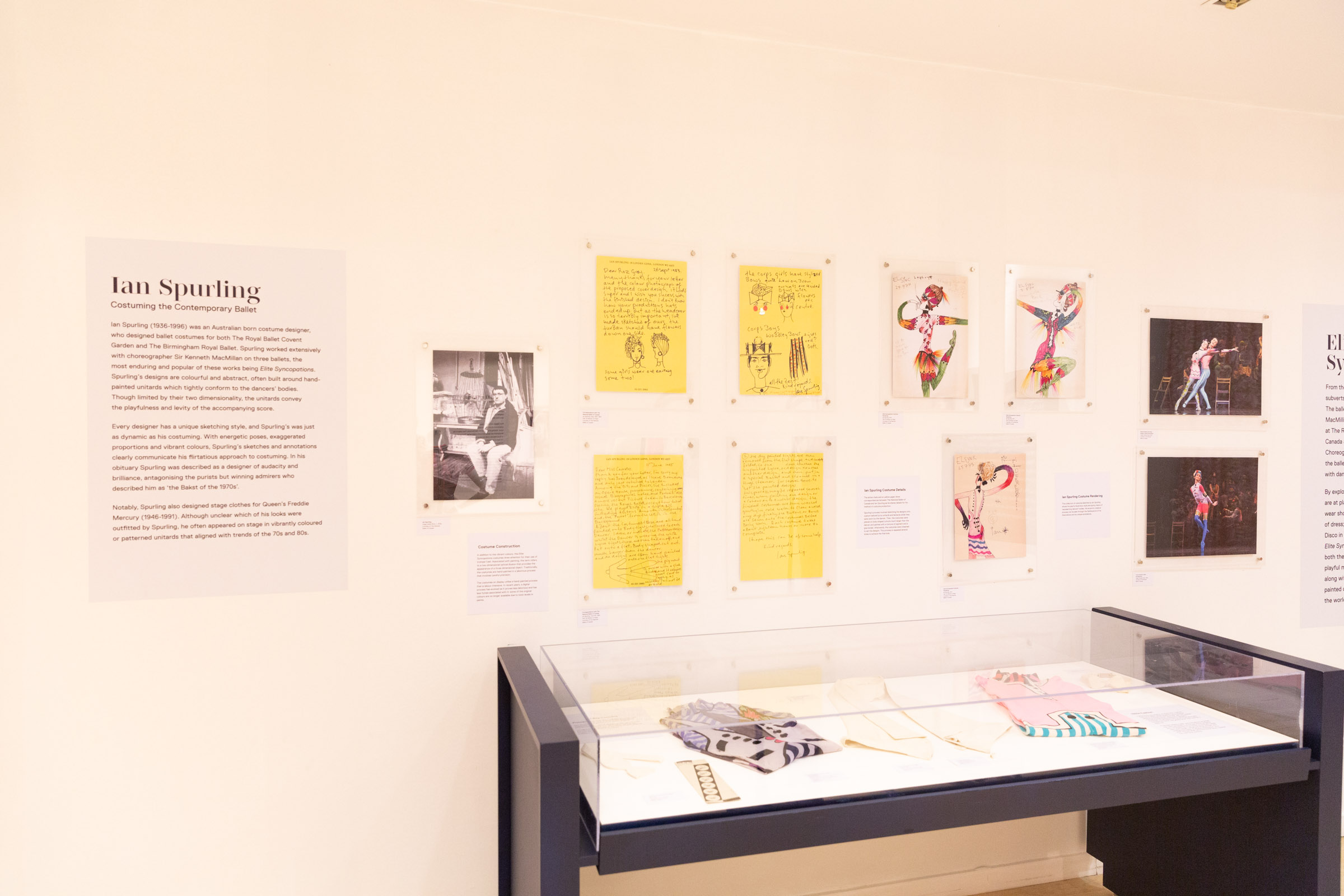
Ian Spurling (1936-1996) was an Australian born costume designer, who designed ballet costumes for both The Royal Ballet and The Birmingham Royal Ballet. Spurling worked extensively with choreographer Sir Kenneth MacMillan on three ballets, the most enduring and popular of these works being Elite Syncopations. Spurling’s designs are colourful and abstract, often built around hand-painted unitards which tightly conform to the dancers’ bodies. Though limited by their two dimensionality, the unitards convey the playfulness and levity of the accompanying score.
Every designer has a unique sketching style, and Spurling’s was just as dynamic as his costuming. With energetic poses, exaggerated proportions and vibrant colours, Spurling’s sketches and annotations clearly communicate his flirtatious approach to costuming. Correspondences between Spurling and The National Ballet of Canada from June 11th, 1985 are shown on yellow paper. The letters describe Spurling’s creative process, indicating that each costume can require up to 18 hours to complete.
Notably, Spurling also designed stage clothes for Queen’s Freddie Mercury (1946-1991). Although unclear which of his looks were outfitted by Spurling, he often appeared on stage in vibrantly coloured or patterned unitards that aligned with trends of the 70s and 80s.
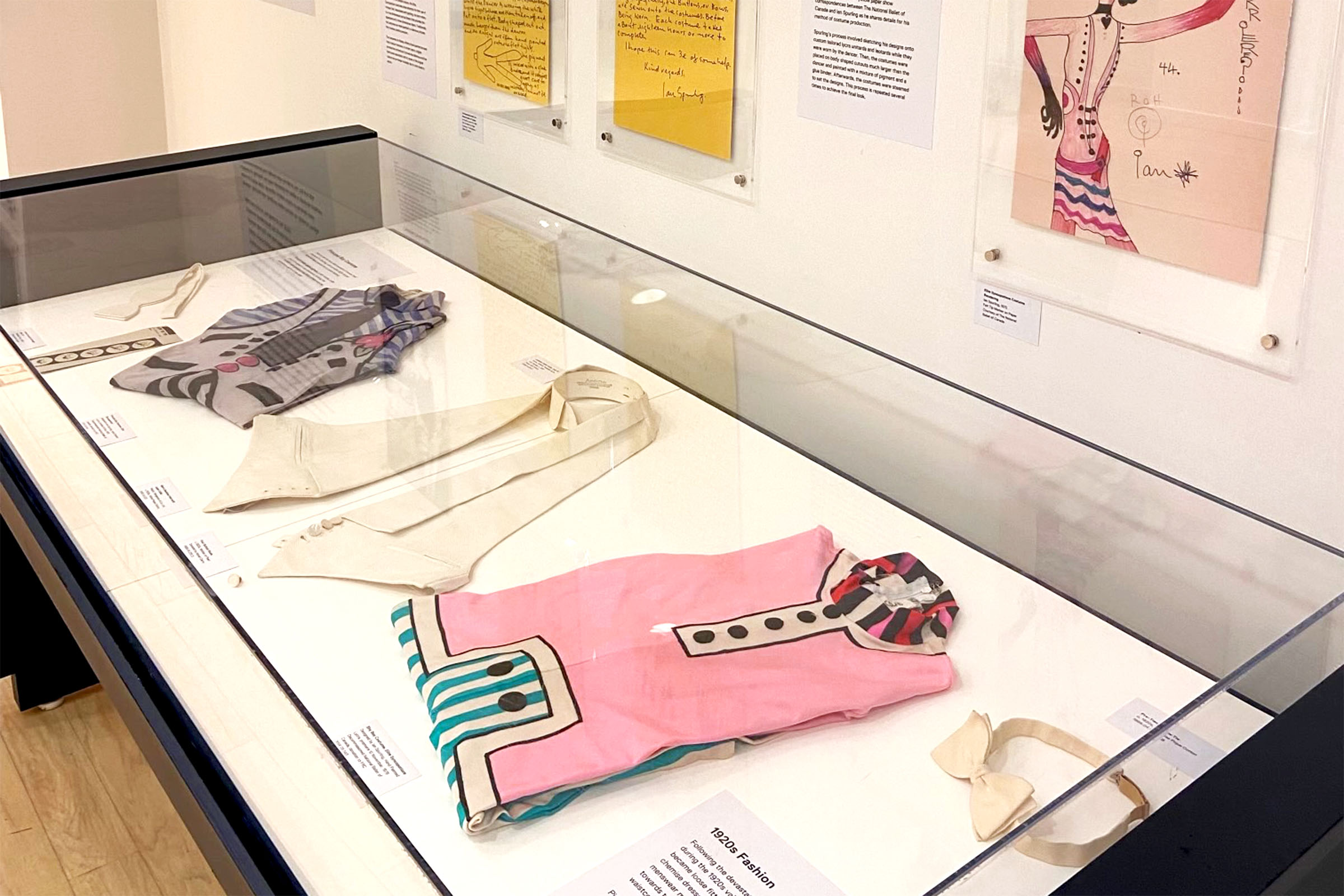
"Dancer 12" Grey Unitard (2014.08.049) and "Shy Boy" Pink Unitard in case (2014.08.043)

